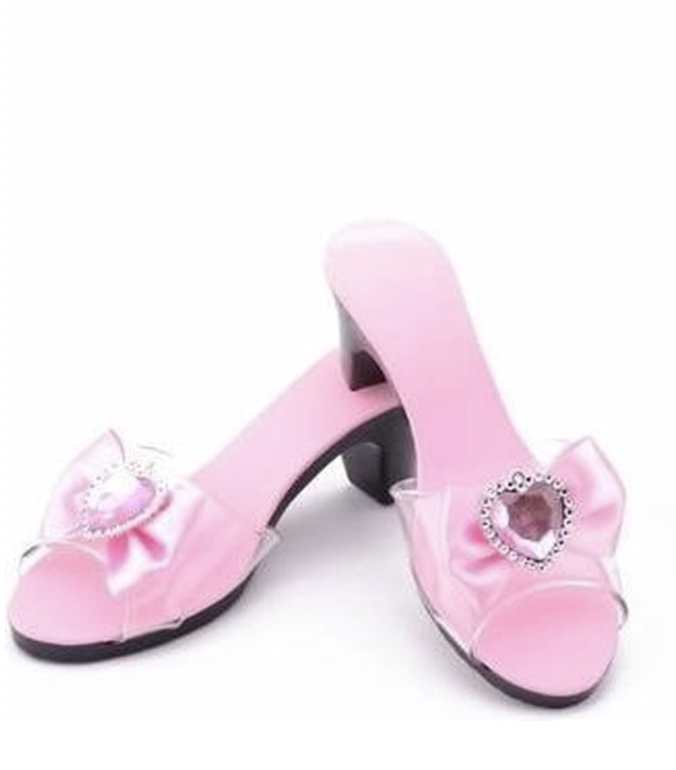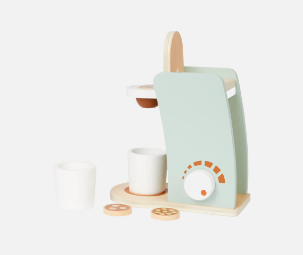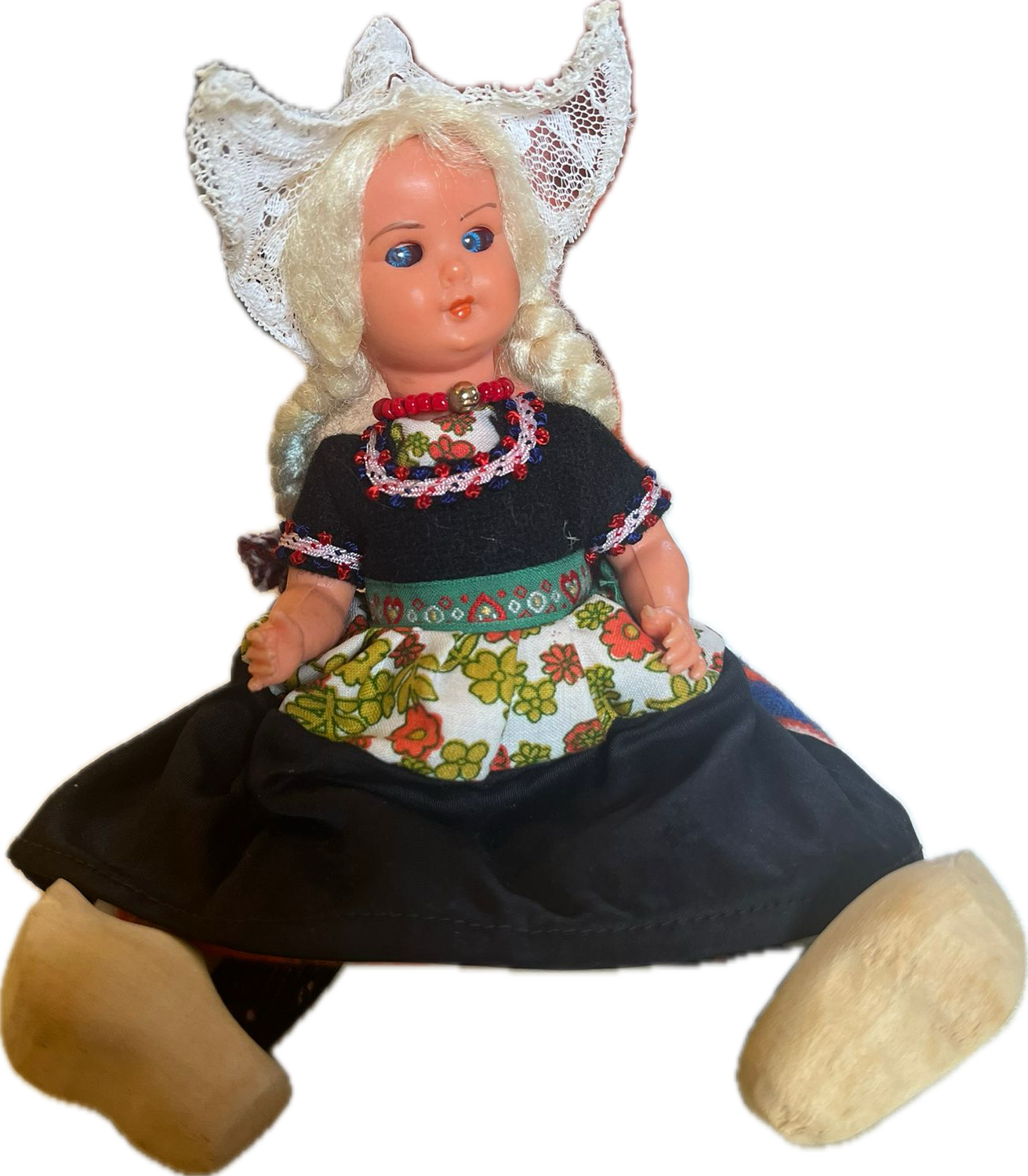
The narrative and object at its center are evident after one follows the first two tours of this experience. However, deciding on the Dutch doll was a process with many ups and downs.

Starting this class we were set on an entirely different object. The small princess high heel made from pink plastic which we remembered from our childhood, unfortunately, was unsuitable for the digitalization process. Still, the narrative of putting kids in clothes or situations that are more mature, like high heels, was an approach we wanted to keep.
Moving forward we decided to go with something different, not a clothing item but a toy kitchen utensil. Purposely, we chose a wooden coffee maker, it worked with our narrative because of the contradiction between children and coffee consumption. With this object, we started the digitalization process, but because of the smooth surfaces and mono-colors, we again encountered some issues.

While brainstorming for suitable objects to digitalize and annotate, we were almost led to leave behind our intended objective. For the class, a few additional toys were provided, amongst those a group of dolls which included the Dutch doll. Because of the reliable success of digitalization, the doll was very appealing. However, it turned out that it was also a good fit with our intended narrative. This enables us to discuss the various aspects of the traditional Volendam costume and then further explore the influence that this cultural representation has. Getting to this point of presenting the narrative in this experience was not always easy.
